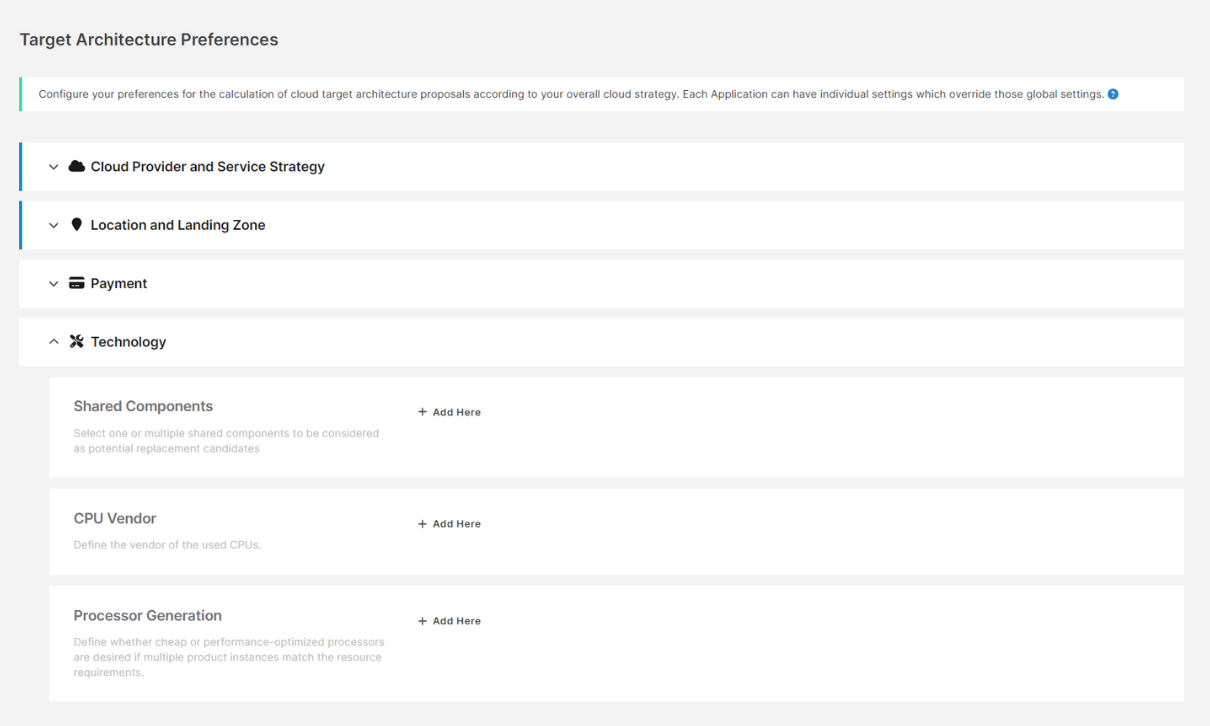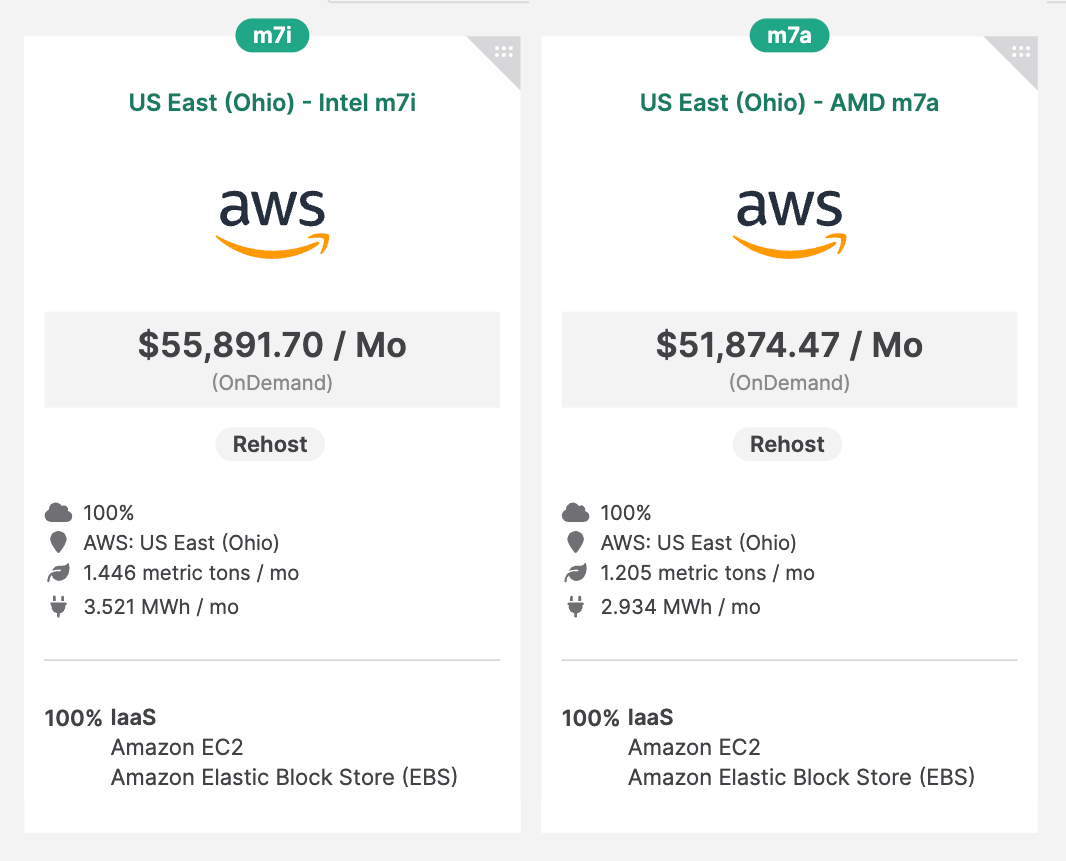A great driver to maximize cloud value: moving to instances with modern processors

Over the past few years, cloud technology has established itself as the “new normal” among an increasing number of organizations. Among other benefits, the cloud opens up numerous opportunities for cost reduction, for example through flexible pricing models (like on-demand), allowing organizations to pay based on their actual cloud usage.
However, many IT departments feel that they are still a long way from having optimized their cloud portfolio. Organizations that invest the time and resources in a proper FinOps program will be able to efficiently find unused resources and overspend, while others might get lost in the complexity of cloud pricing.
In the following, we’ll discuss how FinOps has become a top priority for many businesses that have widely adopted cloud technologies. In the second part of the article, we’ll explore how the choice of specific instances, powered by modern processors, can have a great impact on cloud expenses through performance-driven cost optimization.
Finally, we’ll discuss how the Txture platform helps organizations choose the right cloud services by easily comparing migration scenarios based on price, performance, location, and processor selection.
If you are in the process of migrating or modernizing your IT portfolio, you might be eligible for a complimentary cloud assessment with Txture, supported by AMD. We’ll tell more about this offer at the end of the article.
Cloud cost optimization becoming a top priority

When moving to the cloud, organizations want to be sure that their future portfolio will be optimized and will help them achieve significant cost savings.
For organizations that have migrated most of their critical workloads and applications to the cloud, similar questions arise. “Do we have a clear overview of our deployment?”. “How could we optimize our cloud estate and save costs?”.
When asked about their upcoming cloud initiatives, 71% of the IT professionals surveyed by Flexera say they will focus on the existing use of cloud services, to achieve more cost savings. This makes cloud cost optimization the top priority for IT departments according to Flexera’s State of the Cloud 2024. The same report tells us that 51% of the surveyed companies already have a FinOps team in place, while 20% plan to build one in the next 12 months.
In its 2023 report, “The Race to Cloud”, Accenture surveyed IT leaders on their cloud commitment and expected outcomes. The study showed that only 39% of companies considered that they had achieved their cost reduction targets.
Both studies tend to draw the same conclusion: most organizations are fully aware of the importance of cloud cost optimization, but not all have the same level of maturity on the subject.
Challenges of cloud cost optimization
Maximizing the value of cloud investments is closely related to the practice of FinOps. The concept of FinOps is defined by the FinOps foundation as “an operational framework and cultural practice which maximizes the business value of cloud, enables timely data-driven decision making, and creates financial accountability through collaboration between engineering, finance, and business teams”.
The complexity of cloud pricing
When browsing a cloud provider’s catalog, customers are presented with an extended list of product variants and options. In addition, they can typically choose among several pricing models (on-demand, reserved instance, etc.).
This certainly offers a lot of flexibility for companies to find services tailored to their specific needs. However, it can also easily become overwhelming for IT departments that do not have the time and resources to evaluate all options and identify the best-suited one for each of their use cases.
It’s not just about cost savings
Optimization is not about finding any possible way to reduce cloud expenses. It’s about optimizing costs while maintaining a good level of performance. Other criteria might be included in the equation. Recently, more and more organizations are taking actions to minimize the carbon footprint of their cloud portfolio. Cost optimization has to be performed while considering all other factors that form the company’s strategy.
A powerful way to optimize: moving to instances with modern processors

In this section, we wanted to highlight an important factor to consider when optimizing a cloud portfolio: the migration to instances powered by modern processors.
Looking only at the hourly instance price, organizations can be tempted to stick to older-generation processors, which are generally less expensive than the latest versions. However, modern processors can typically deliver the same workload with smaller or fewer instances. In other words, moving to the latest generation processors is often the occasion to do more with less.
As an example, AMD describes in detail the benefits of moving to AWS instances powered by the latest AMD EPYC™ processors. Compared to prior competitive AWS instances, this modernization initiative can lead to 2x performance uplift while decreasing costs by 37%. This is the power of performance-driven cost optimization.
Deeper insights for cloud cost optimization
All this brings us to a handful of questions at the heart of cloud migration and modernization initiatives.
- Which areas of my current IT portfolio could be optimized and lead to cost savings?
- To which services and instances should I migrate in order to achieve better cost-effectiveness?
- How do I consider other factors (like performance or carbon footprint) in the decision-making process?
In this last section, we discuss how the Txture platform can help you drive modernization strategy and achieve full cloud value.
With the Txture software, you quickly get a complete overview of your current IT landscape. This helps you visualize the dependencies between all assets, and understand which applications support each business capability.
The platform also comes with a set of criteria that allows you to express your modernization strategy, as well as your migration preferences and requirements (preferred provider, preferred CPU vendor, cost optimization goals, sustainability goals, etc.).

Once you select workloads and applications to migrate, the platform provides you with a handful of architecture options, including a list of cloud services, based on the strategy and preferences you defined earlier.

In this example, we compare two modernization scenarios to AWS, one involving services with Intel components, and the second with AMD components. You can easily compare both scenarios based on different criteria, not only the price, but also the pricing model, deployment location, or carbon footprint. You can also click on a specific scenario to explore the list of services included.
This allows you to understand your current IT portfolio, compare different modernization scenarios and make the right decisions based on your cloud strategy.
Are you considering a cloud migration, or do you plan to switch your strategic cloud provider? Then, you have the opportunity to use the Txture platform for a complimentary assessment, supported by AMD.
Learn more about the AMD & Txture offer in this page, or directly apply for a complimentary assessment:
Apply for a complimentary assessment
Related posts
29.4.2025Application ModernizationDefine your scope for IT modernization2.3.2025
Cloud StrategySelecting the right cloud data center for hosting your workloads24.5.2024
Cloud Knowledge5 best practices to manage change during a cloud transformation5.4.2024
Generative AIHow to welcome Generative AI into your existing tech ecosystem2.4.2024
Generative AIPaving the way for leveraging Generative AI in your organization
